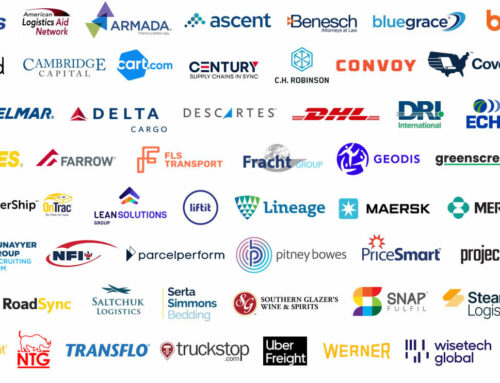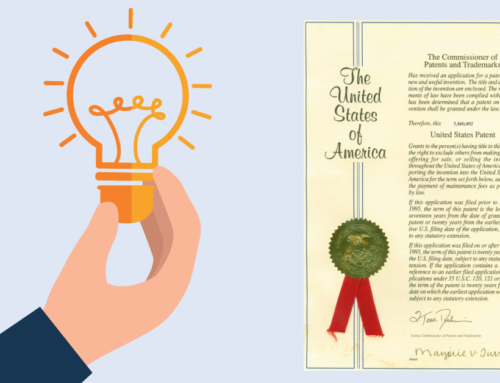As I have written in the past, the logistics market is in the early stages of a massive wave of consolidation. Recent acquisitions such as UTi/Unigistix, UTi/Standard, UPS/Livingston, UPS/Menlo Worldwide, Kuehne & Nagel/USCO, DHL/SmartMail, and Reliant Equity/Air-Road underscore this trend. These transactions reflect three major forces that are here to stay: customer demand for integrated solutions, new technologies that provide scale economies to large logistics firms, and deep-pocketed acquirers in pursuit of new targets.
However, not all acquisitions succeed. Recent studies indicate that as many as 60 percent of all acquisitions fail to create value in excess of the purchase price. Given the continued pressures for consolidation, a vital question emerges for logistics CEOs and CFOs: what steps can you take to maximize your chances of success in a merger?
Fortunately, there are success stories to draw on. A study published in the March 2003 Harvard Business Review shows that one winning strategy is to engage in a consistent pattern of multiple acquisitions, through both good times and bad. The study examines 7,475 acquisitions made by 724 U.S. companies between 1986 and 2001. The researchers found that the 110 “frequent buyers” – those firms that bought more than 20 companies during the 15-year period – outperformed infrequent buyers (those that bought one to four companies) by a 1.7:1 ratio, and decisively beat non-buyers by a 2:1 ratio.
These “serial acquirers” demonstrate common characteristics. They tend to have a disciplined set of rigorous acquisition criteria; consistent processes; a focus on both financial and cultural metrics; stand-alone merger and acquisition (M&A) staff; and a feedback loop that enables buyers to learn from both their wins and losses.
Within the transportation and logistics sector, two companies stand out as examples of successful serial acquirers: UPS and UTi. One is a transportation giant with $37 billion in revenues, a market capitalization of $80 billion, and 97 years of history in the industry. The other is a relative upstart, with gross revenues of $1.4 billion, a market capitalization of $1.7 billion, and just over a decade of history. Both are serial acquirers who have achieved top-quartile results, as reflected by their market capitalization increase. In the case of UPS, the company’s value grew 16%, 18%, and 12% in 2002, 2003 and 2004, respectively, during a time period when the S&P 500 declined. In the case of UTi, the company skyrocketed 34%, 44%, and 76% over the same three-year period! In both cases, much of this growth resulted from shrewd acquisitions.
To get a better understanding of UTi’s and UPS’ M&A strategy, we interviewed their senior leadership. We were fortunate to get significant time and input from UTi’s CEO Roger MacFarlane, UPS Supply Chain Solutions’ head of global health care Bill Hook, and UPS Supply Chain Solutions’ head of public relations Lynnette McIntire. Highlights from these interviews are presented below.
UTi: Focus on Post-Merger Management and Customer Retention
We interviewed UTi CEO Roger MacFarlane regarding his firm’s acquisition strategy.
Acquisition Strategy
BG: UTi has successfully acquired and integrated close to 20 companies in the last decade. What has been the key to your acquisition strategy?
RM: The first issue is ensuring you are buying the right business. There has to be a good cultural fit, in terms of ethical standards of behavior, customer-centric values, and other soft criteria in addition to the hard ones.
Post-Acquisition Integration: Entrepreneurial Management Retention
BG: Entrepreneurial culture has been a hallmark of UTi. How do you preserve this as you buy businesses? What do you focus on post-acquisition?
RM: The next issue is to make sure you are strengthening your bench. We are particularly keen on retaining and developing management. We treat them as if we’ve just hired them. So we lay out very clearly what their responsibilities are going to be, and how they will interact with their team. We focus on treating the acquired company and its management in a positive fashion.
What can frequently happen, particularly when you bring two freight forwarding companies together, is that a buyer thinks their management is stronger, since they are the buyer. We take the opposite approach, and want to make sure that our people consider the newly-acquired management a big boost to our team. This helps to ensure that they are welcomed.
At the same time, the target companies need to know that they aren’t going to be micro-managed. When we bought Standard, we were focused on this issue. They were used to entrepreneurial success. We also want to show that we are adopting some of their practices, so they are accepted and contributing. For instance, Bill Gates of Standard has played a role in our strategic leadership team. We did the same with Continental and SLI leadership. They bring fresh ideas and an entrepreneurial infusion of energy.
The effect of this is that the company being acquired feels like a true partner.
Customer Retention
BG: How do you maximize customer retention?
RM: As far as customers are concerned, we try to go out and visit with customers as quickly as possible. Our competition likes to claim that customers are vulnerable post-deal, and we try to inoculate against that by going out to meet with customers. In most cases, the same operational people are in place, so we stabilize the situation.
So in line with that, we typically do not change the name of the company, because it’s a symbol of what the customer has become familiar with. Not until the customers are comfortable does that happen. This takes anywhere from 6 months to two years.
If you were buying a distressed company, it would be a different story. But we are focusing on high-quality businesses.
Operational Integration
BG: What do you focus on to ensure a smooth operational integration?
RM: This depends on the kind of target. In the case of Continental, where we had overlapping locations, we focused on this from the ground up. We delayed the acquisition closing by 30 days so we could install our software/hardware and ensure successful technology integration.
With a company like Standard, which is more of a stand-alone entity, we are more careful to avoid forcing any operational integration too aggressively.
Cross-Selling
BG: Are there significant opportunities for cross-selling in your acquisitions?
RM: We focused on this with Standard. This is a key for post-acquisition growth. But more important is to ensure customer retention and stability.
Transaction Structures
BG: How do you structure acquisitions to maximize success?
RM: We like to have management equity and an earn-out component, so growth and cross-selling becomes particularly important. And we invite them to use the whole of UTi as a source of new opportunities.
Earn-outs work when you have operations that can stand on their own and can be measured accordingly. It is much harder if they are not stand-alone operations.
With Standard, a classic earn-out worked. With Continental, we had to restructure the earn-out once we integrated the operation.
Post-Acquisition Processes
BG: Is there a “UTi book” for post-acquisition steps to take?
RM: We have a documented set of steps. It isn’t exactly like “this after 30 days” or “that after 60 days” – it is not highly-rigid, but it is a project plan framework with milestones. Some of the key things on which we focus are:
- Management retention
- Customer retention
- Customer cross-selling
- Operational integration
- Benefit plans and HR integration
- Regular financial reporting
Lessons Learned and Pitfalls
BG: What has UTi learned from its wins and losses?
RM: When we’ve had the right cultural fit and personal chemistry, we’ve been most successful.
If they have been already successful, and we are simply providing more resources, global footprint, etc to make them more successful, that has worked. We like to find strong-growth companies that can do even better with us. The thing we need to do is provide the right level of support.
Pitfalls have occurred where we have not really had the right management. Another issue is the integrity of the company you’re acquiring. Whenever we’ve had a problem, it’s been linked to this issue.
We did not do very well in Italy, with an acquisition a while back, and are still in litigation with the owner. Various issues were not on the balance sheet, despite its being audited. In the end, once the dust settled, the seller had falsified the accounts. So we had to terminate the relationship.
In short, the key is to ensure you’ve done your homework on the diligence upfront.
UPS: What Gets Measured Gets Done
The UTi model is a case study of an extraordinary blend of entrepreneurship and rapid growth. In contrast, while the UPS model has much in common, the company is particularly focused on measuring and demonstrating quick results. To explore the UPS approach, we interviewed UPS Supply Chain Solutions public relations chief Lynnette McIntire. To get the perspective of an acquired company, we also spoke with Bill Hook, former leader of Livingston and current head of the UPS Supply Chain Solutions health care practice.
Acquisition Strategy
BG: UPS has purchased 26 companies in the past 4 years, including 16 just at UPS Supply Chain Solutions. What has UPS looked for in these deals?
LM: UPS made a decision not to go after complete, integrated players, but to find unique players and fill gaps in the network. We wanted not just geographic reach but also expertise. So we chose niche players to fill in the strategy. For example, Livingston gave us a Canada footprint but also an entry into the healthcare market. This kind of a vertical sector requires very specific knowledge about regulations, licensing, technology, and people.
Just Say No
BG: Part of successful acquisitions involves knowing when to say no. How did you decide to pass on deals?
LM: UPS has rejected companies that didn’t fit the cultural model. Companies that weren’t operations-driven got dropped. Those that didn’t share same values and attitude in terms of customer commitment, quality, and importance of information technology were not going to be a fit. If the entrepreneur wants to keep a separate silo, we are not going to be interested.
Post-Merger Integration
BG: What are the keys to success in the UPS post-merger model?
LM: We focus on several steps:
Quick operational improvements – make change happen fast.
First observe. Then create a cross-functional team where you mix up people from the different units, including both old guard and new entrepreneurial teams as a change team, with both viewpoints.
Apply the 80/20 rule – inculcate the company with UPS’ values, but keep 20% of the entrepreneurial fervor.
Communicate, communicate, communicate. People need to know why you are doing this. Keep them up to date about the rationale, and make them feel a part of something bigger.
BG: How do you process so many UPS acquisitions simultaneously?
LM: The key is to have multiple dedicated teams. Our M&A leader was very busy. First we integrated Sonic Air, a small same-day air delivery company. The lessons learned were important for subsequent acquisitions. Incrementally, the knowledge kept building. With the acquisition of Fritz, a much larger entity, we had one person, in the middle of all of the processes, along with a small, centralized team representing all of the major disciplines – HR, operations, marketing, and sales. They had full autonomy to make key decisions with respect to integration. Customer Retention
BG: How do you keep customers?
LM: Customers start to see a benefit from wide arrays of capabilities UPS provides. They may have 10-15 customs brokers, another for warehousing in each market, for transportation, and others. They can start to consolidate services so we can provide more value. Because UPS is global and has such a broad array of capabilities, we can share a lot of best practices information. We also seek to ensure customer care is not disrupted. In some cases, when customers get moved to other buildings and/or operations, we have to ensure there is no disruption to their daily business.
Management Retention
BG: How do you ensure newly-acquired managers stay involved?
LM: All new employees gain. First, smaller companies generally find that moving to UPS benefits provides an advantage, as well as access to UPS stock. We also provide opportunities for career development and advancement. The vast majority of our promotions come from within.
In addition, there are many incentives for high potential people who perform well. This may include financial incentives, lots of senior attention, formal orientation and training programs, and a formal career development planning process. We also provide a broad mix of exposure. You can have 5-10 different major roles at UPS during the course of a career.
New employees from an acquired company typically go through a process. At first they are wildly enthusiastic about new opportunity and sometimes exaggerate their worth to the organization; then they become frustrated with it all because it’s not all there as they expected; and then finally they enter a phase of acceptance/equilibrium. New people go through the same phases. If they stay through the frustrated phase, then they find their place and realize the opportunities and the rewards.
Measurement
BG: Bill Hook, you lived through the acquisition of Livingston by UPS, and went from running the Livingston business to all of UPS’ global health care practice. What was the transition like for you?
BH: The key was to measure the right things. We measured three issues: financials, people, and customers. Our joint goal was to ensure success on all three fronts. Here’s how we did:
Financials – we measured revenue targets, productivity, sales costs, integration budget, and general/administrative costs (to prior and to budget). We hit our revenue growth target.
People – the keys were low unwanted turnover and highly-positive employee survey feedback. Turnover was 10% pre-acquisition, and below 10% post-acquisition. We actually improved our retention!
Customers – we tracked client retention (no unwanted churn). It had been 8% before. After the UPS merger, it actually dropped to 4%!
Management Retention
BG: What did UPS do on day one to get management buy-in?
BH: Post-merger, UPS brought a senior manager into the company immediately. This did two things. First, it signaled a new direction. Second, it injected strategic thinking and broke down barriers quickly, to acclimatize Livingston people to the new world. In situations where this isn’t done, often the acquired company doesn’t sense how it is supposed to change and evolve. Clear parameters helped, so everyone knew where they were marching toward.
I also think speed is a cornerstone. The timelines for the integration were quite quick, for structural changes within the company. It got everyone over the change and uncertainty quickly and decisively, even if everyone didn’t agree in full.
Communication was another key. When you are dealing with pension and benefits, and compensation programs, rumors spread and uncertainty can cause problems. UPS communicated everything clearly. Similarly, it was important to convey the same to customers.
UPS also did a great job of recognizing the strength of the acquired company. When we moved forward, they made clear that the core value they were acquiring was based on the people, and they didn’t want to harm that value. So a first step was to identify best practices on the side of the target.
Customer Retention
BG: How did UPS ensure customer retention?
BH: The key was quick results – we wanted to show customers that we could cross-sell and implement fast. We also changed roles quickly, clearly and decisively. Identifying the right structure and putting people in place quickly was a key.
The UPS people who were injected into the business started by going out to meet customers. They also did lots of site visits. This demonstrated that UPS was serious about caring about its key stakeholders. They followed up with a substantive employee survey. This gave all employees the chance to do an online survey, identify areas of concern, and assess how the business has gone over the 18 months of post-merger integration. By the second one, six months later, there was a 10% improvement in U.S. scores.
The Post-Merger Process
BG: What was the integration process like? What key steps did UPS take?
BH: The integration took a year. But most of it had to happen in the first six months. There were things like name changes and benefit programs that take a while. There was an integration project leader, and a sponsor as well. There were teams for customers, for employees, for IT, for the name change, and several others. Each used the same format in terms of project management. They developed their milestones and reported on them to the steering committee. The teams were cross-functional and cross-company (both target and acquirer).
There was a major transition from the entrepreneurial Livingston world to the regimented UPS world. So we held a 2-day off-site with the senior management teams.
Lessons Learned
BG: Were there any unwanted surprises?
BH: The windup of pension plans and other benefits was more complicated than we had expected.
In many cases, we had complex decisions to make. But speed is everything. The longer you drag things out, the more you delay inevitable, difficult decisions. Get it over early, and get it over quickly.
Conclusions
Consolidation is here to stay in the logistics market. Serial acquirers like UTi and UPS demonstrate that, despite the fact that over 60 percent of all mergers fail to create lasting value, it’s possible to use acquisitions as a successful mechanism for profitable growth. These comments from two firms with successful track records in M&A suggest that there are common principles that can be followed.
This article was originally published at logisticsquarterly.com.










